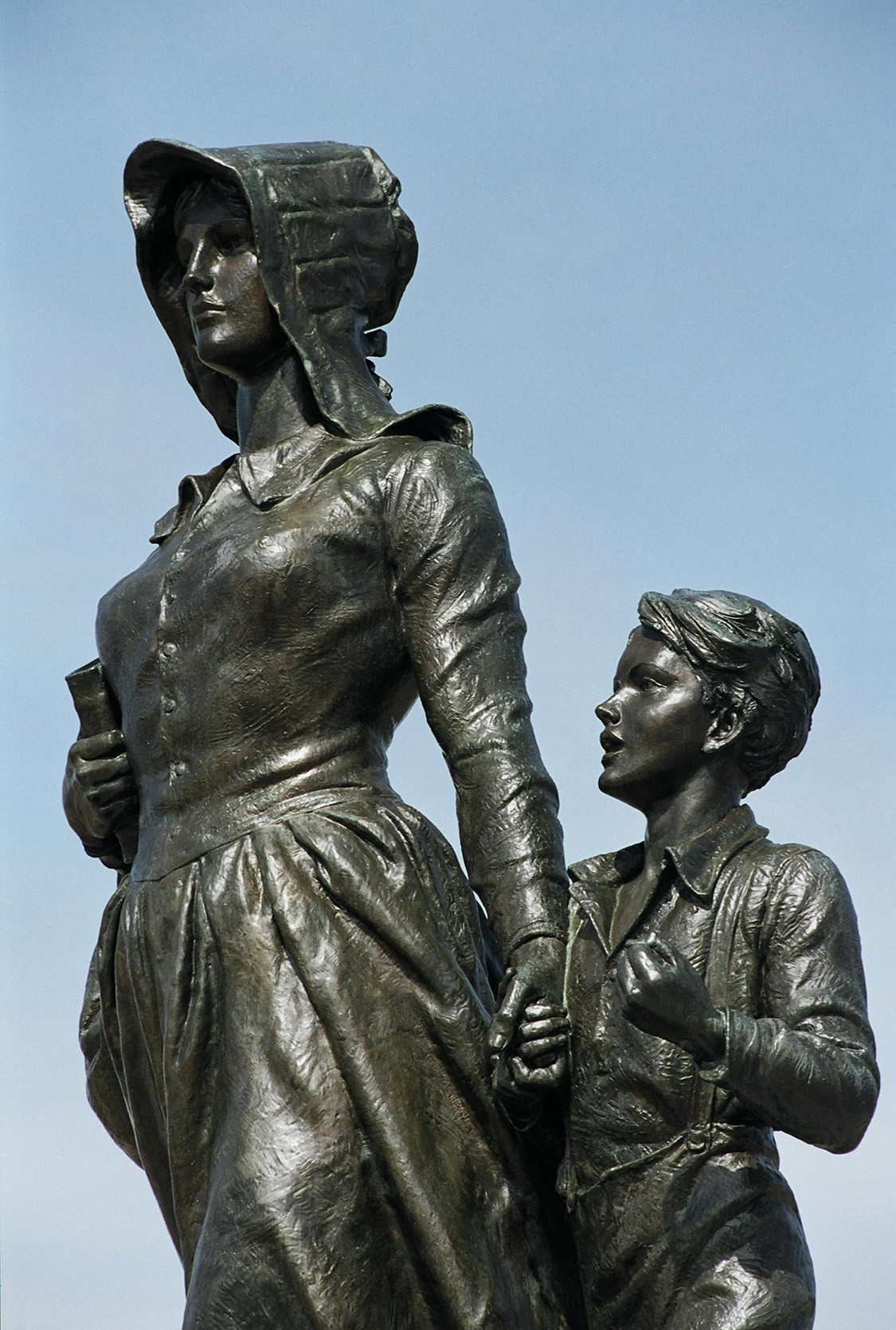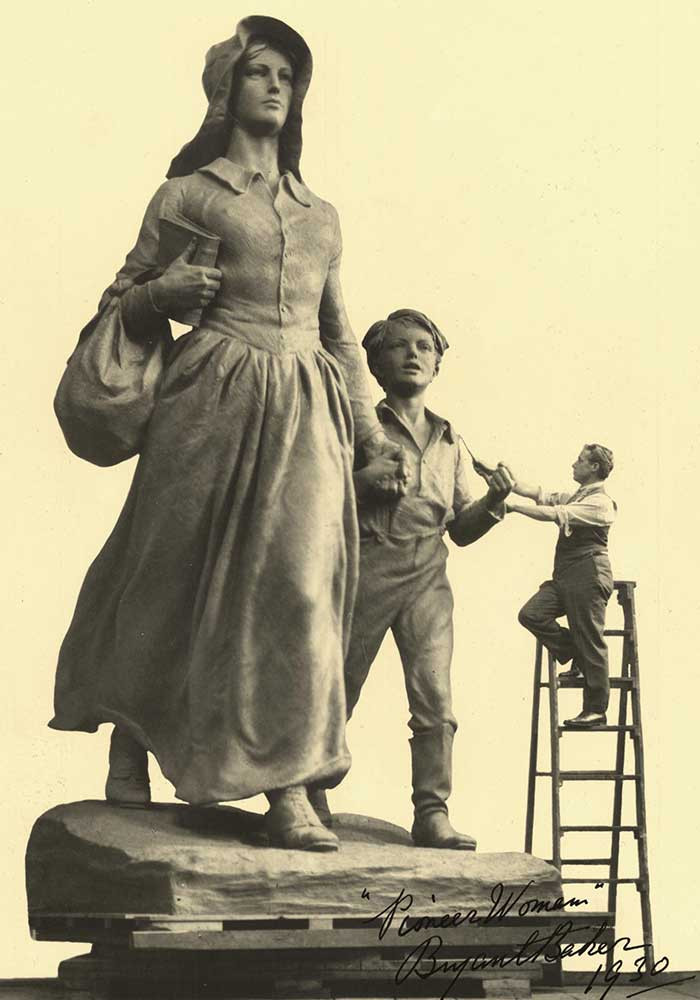Located in Ponca City, Oklahoma, the Pioneer Woman statue stands as a powerful tribute to the fortitude and spirit of the women who played a crucial role in settling the American frontier. Sculpted by English-born artist Bryant Baker, this imposing bronze figure was unveiled in 1930, quickly becoming an iconic representation of pioneer heritage and a significant landmark in Oklahoma’s cultural landscape.

Erected adjacent to the Pioneer Woman Museum, the statue depicts a determined woman striding forward with a Bible tucked under her arm, guiding her young son into an uncertain future. This evocative portrayal encapsulates the essence of the dedication plaque’s inscription, which honors “the heroic character of the woman who braved the dangers and endured the hardships incident to the daily life of the pioneer and homesteader in this country.” The sheer scale of the artwork commands attention; the cast-bronze sculpture weighs twelve thousand pounds and reaches a height of seventeen feet, elevated further by a pyramidal base of silverdale stone to an overall presentation of forty feet.
The genesis of the Pioneer Woman statue can be traced to Ernest W. Marland, a prominent oilman and future Oklahoma governor. Between 1926 and 1930, Marland spearheaded the project, initiating a design competition in collaboration with a New York gallery. Twelve esteemed artists, including notable figures like A. Stirling Calder, James Earle Fraser, and H. A. MacNeil, were invited to submit models. Each participant received a detailed brief outlining the statue’s concept, along with authentic sunbonnets for inspiration and a $10,000 advance.
In 1927, the submitted models were publicly showcased in a traveling exhibition that spanned major cities across the United States, from New York and Boston to Chicago, Minneapolis, Dallas, and Oklahoma City. Public engagement was central to the selection process, with more than 750,000 votes cast by attendees. Bryant Baker’s model, aptly named “Confidence,” resonated most strongly with the public, securing him the commission and a $100,000 prize. H.A. MacNeil’s submission earned the second-highest score, highlighting the high caliber of artistry involved in the competition.

The dedication of the Pioneer Woman statue on April 22, 1930, marked a significant event in Ponca City. An estimated forty thousand visitors gathered to witness humorist Will Rogers deliver a heartfelt tribute to all pioneers, with a special emphasis on those who shaped Oklahoma. The ceremony also included a national radio broadcast featuring speeches from President Herbert Hoover and Oklahoma-born Secretary of War Patrick J. Hurley, further underscoring the statue’s national importance and symbolic weight.
Beyond the Pioneer Woman statue itself, the legacy of the project extends to the Woolaroc Museum near Bartlesville, Oklahoma. This institution houses not only the twelve models submitted for the competition but also a “Pioneer Man” model designed by Baker, offering a comprehensive view of the artistic vision behind the monument. Ernest W. Marland’s commitment to preserving this cultural heritage is further evidenced by his decision to deed the Pioneer Woman statue and its surrounding site to the State of Oklahoma, ensuring its enduring presence for future generations.

The Pioneer Woman statue remains a compelling symbol of the courage, resilience, and pioneering spirit embodied by the women who helped build America. It stands as a testament to their enduring contributions and a reminder of the challenges and triumphs inherent in the pioneer experience.
References
“Bryant Baker,” in Dictionary of America Painters, Sculptors, and Engravers, ed. Mantle Fielding (1926; rev. ed., Green Farms, Conn.: Modern Books, 1974).
Donald De Lue, “Bryant Baker,” National Sculpture Review (Fall 1964).
“Exhibition of Models for a Monument to the Pioneer Woman (New York: Reinhardt Galleries, [1927?]),” in “Pioneer Woman Statue,” Vertical File, Research Division, Oklahoma Historical Society, Oklahoma City.

